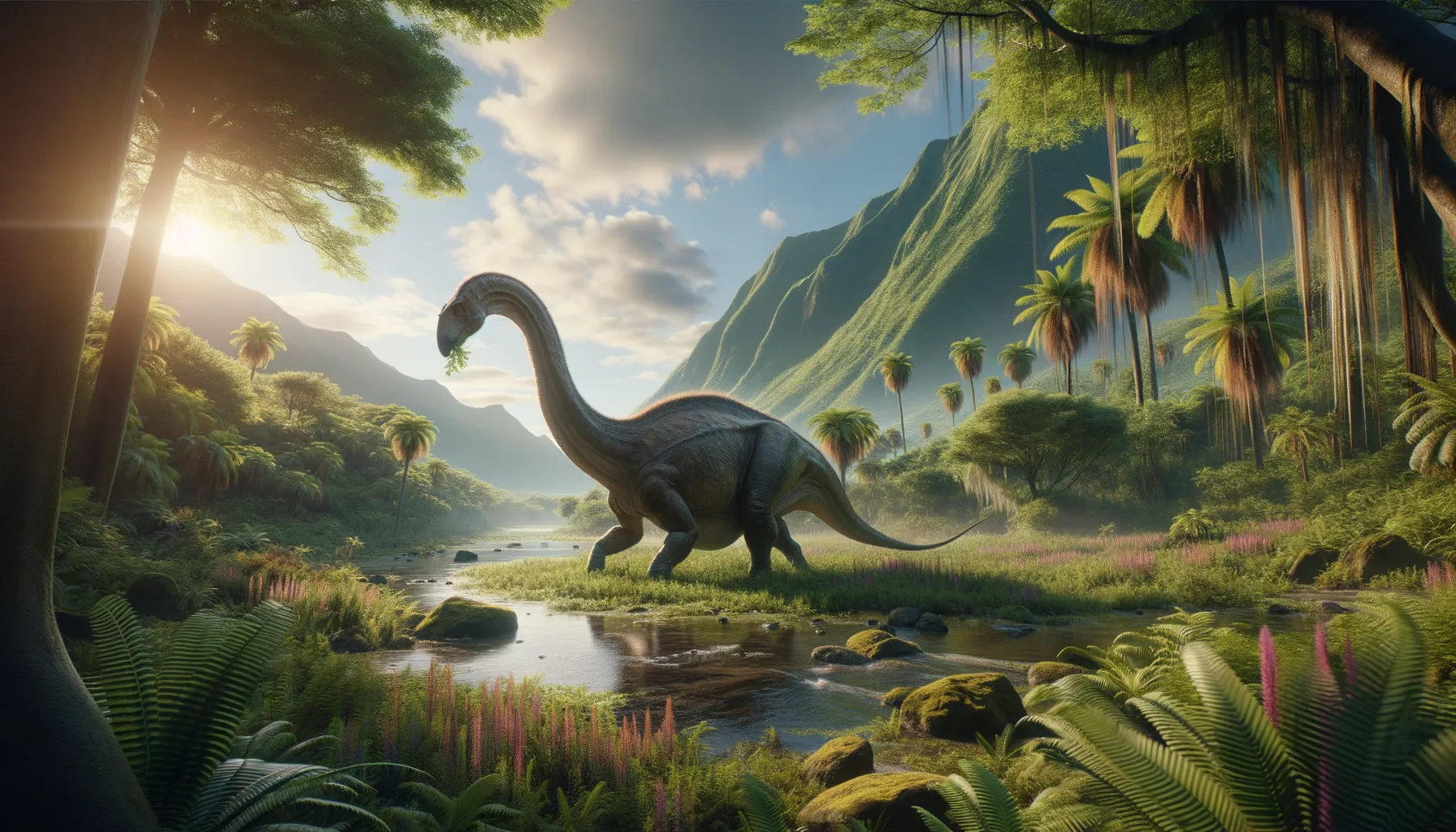
Proa
Graceful movements on ancient grounds.
Period
Cretaceous
Length
Measured about 7 meters long.
Height
Stood roughly 3 meters tall.
Weight
Weighed around 700 kilograms.
Proa was a herbivorous dinosaur from the Cretaceous period, known for its duck-billed appearance. Discovered in Spain, this dinosaur provides insights into the evolutionary links between species on the ancient supercontinents. It thrived in a lush environment and likely moved in herds to forage for food. Proa's fossil remains highlight crucial aspects of dinosaur behavior and distribution during its era.
Diet
Proa was a herbivore, primarily feeding on plants. It had specialized teeth to grind vegetation effectively, adapting well to its lush environment.
Hunting
As it was a herbivorous dinosaur, Proa did not hunt. Instead, it focused on foraging for a variety of plant species available in its habitat.
Environmental challenges
Proa faced challenges such as navigating dense forests and avoiding predators. Fluctuations in climate would have impacted its food supply, adding to its survival challenges. It needed to adapt to seasonal changes and resource availability for sustenance.
Speed
Moderate speed on land.
Lifespan
Lived approximately 20-30 years.
First discovery
Discovered in the early 21st century in Spain.
Fun Facts
- Proa is a dinosaur that lived during the Early Cretaceous period, roughly 130 million years ago.
- The name 'Proa' comes from the Spanish word that means 'prow,' named for the shape of its skull.
- Proa was a plant-eating dinosaur, known as a herbivore, that likely roamed in groups for safety.
- This dinosaur is believed to have walked on both four legs and could stand on two when needed, especially to reach higher plants.
- Proa is considered a part of the Iguanodontidae family, which includes other well-known dinosaurs like Iguanodon.
- Fossils of Proa have been discovered in what is now known as Spain, offering insights into the dinosaur life in Europe.
- The discovery of Proa helps scientists understand how herbivorous dinosaurs adapted to their environments in different parts of the world.
Growth and Development
Proa hatched from eggs and underwent significant growth to reach its full size. Juveniles likely stayed in groups for protection as they matured. Its growth involved changes in skeletal structure, enabling it to adapt to its environment efficiently.
Habitat
Proa inhabited lush, forested areas with abundant plant life. It thrived in warm climates where vegetation was rich and varied. These environments offered both food and protection, supporting its herbivorous lifestyle.
Interaction with other species
Proa likely coexisted with other herbivorous dinosaurs, possibly sharing resources. It would have had to be vigilant of carnivorous predators seeking prey. Herd behavior may have been a strategy for safety and efficient foraging.
Natural lifespan
Proa naturally lived around 20-30 years.
Reproduction
Proa reproduced by laying eggs in nests, likely in safe, secluded areas. Parental care might have been limited, with hatchlings having to quickly learn to fend for themselves.
Social behaviour
Proa might have been a social animal, likely moving in small groups to ensure protection and increase foraging success. Group living could have provided a direct advantage against predators.
Fossil locations
Proa fossils have been primarily discovered in Spain, offering valuable insights into its distribution. These findings have helped paleontologists understand its role in ancient ecosystems. The fossils are crucial for reconstructing the Cretaceous environment.
